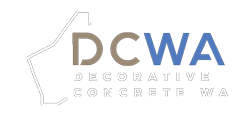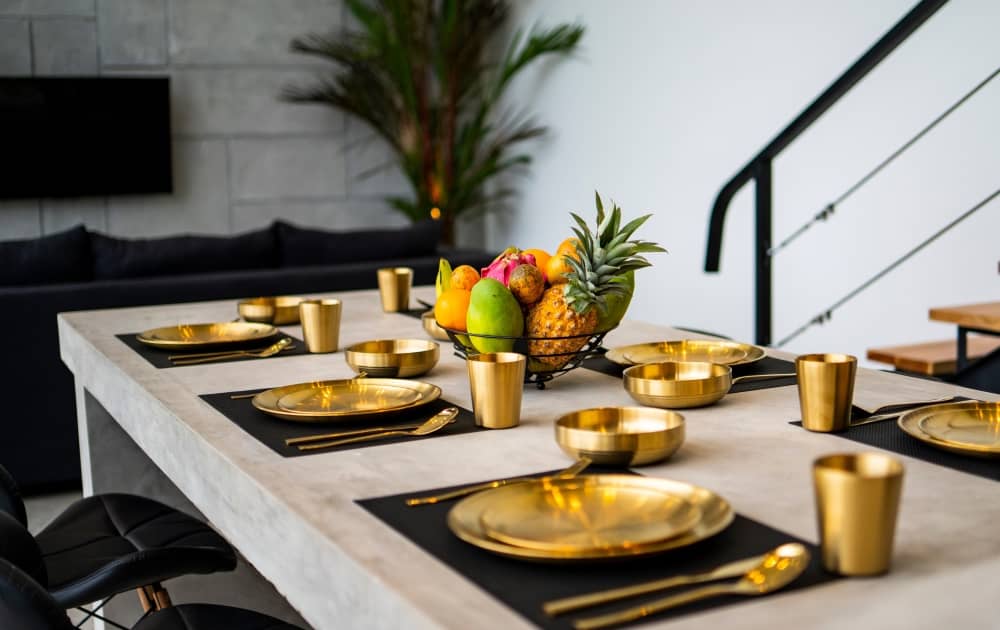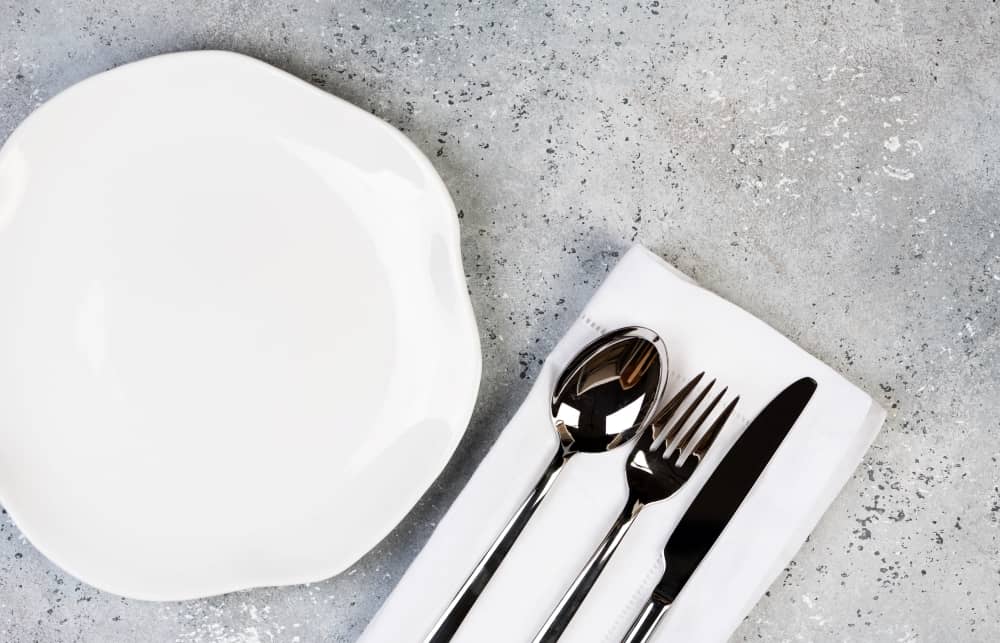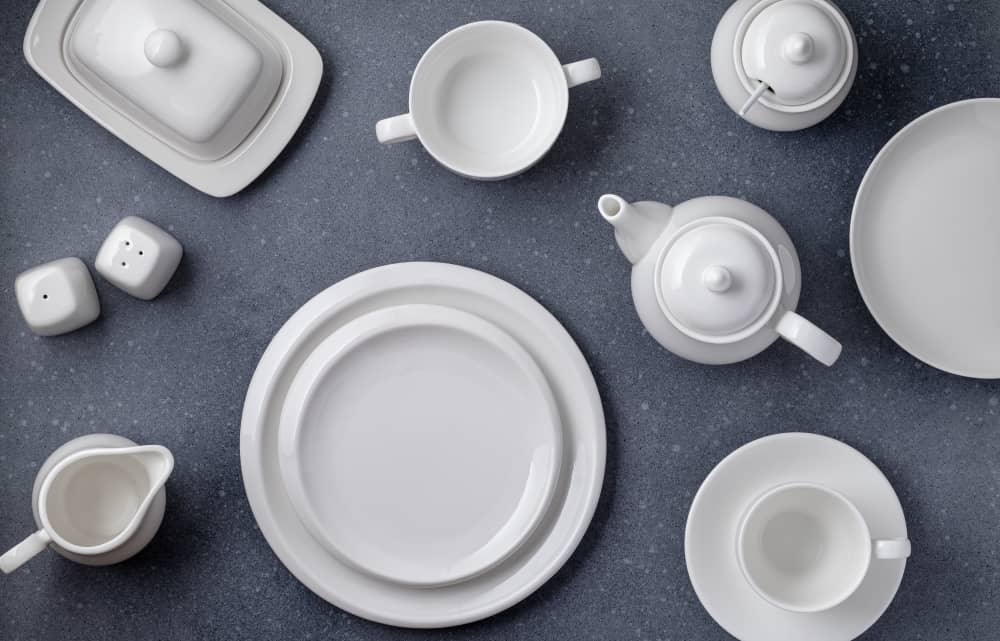Pros and Cons of Concrete Dining Room Tables: How to Decide if It’s Right for Your Home
- May 26, 2023
- Written By Brad Russell
- Guides
When bringing a unique and modern touch to dining spaces, concrete dining tables are hard to beat. They are a brilliant way to inject an industrial accent into your home décor. This look has been around for some time and is here to stay. But are they suitable for your home?
Let’s weigh the pros and cons of concrete dining tables to help you decide whether they are the right choice for your home:
Pros of Concrete Dining Tables
The following advantages will show you why concrete dining tables are not just trendy but also worth the investment:
Durability and Resistance to Wear and Tear
The strength and sturdiness of concrete are undeniable. It’s virtually known for its ability to withstand heavy loads, which is why it is the primary material option for warehouse flooring and other industrial elements. When it comes to your dining room, concrete tables are designed to handle the weight and pressure placed on the surface. Place dishes, utensils, and many other items without worrying about the table collapsing or breaking.
Another excellent characteristic of concrete dining room tables is their resistance to wear and tear, as well as scratches and dents. Unlike other materials, they do not get damaged easily, even with everyday use.
Easy Maintenance and Care
Regular cleaning and periodic sealing are the keys to a long-lasting concrete surface. Cleaning does not have to be anything complex and demanding. Simply wipe the table after use with a soft cloth to get rid of any spills or dirt.
Concrete tables are generally stain-resistant, but it doesn’t mean they are 100% stain-proof. The term implies that the surface can resist or sometimes repel stains better than other materials. If you see tough stains on your table, you can use a concrete-specific cleaner or a mild soap. Dilute the product in water and wipe it with a cloth or sponge. Ensure to avoid scrubbing vigorously or using bleach or anything abrasive so as not to damage the surface.
Here are other ways to extend the table’s lifespan:
- Use mats, coasters, or trivets before placing hot dishes or cookware. Although heat-resistant, concrete can still crack due to being under thermal shock.
- Concrete tables are known for their scratch resistance, especially when sealed properly. However, it can still be prone to such damage, which is why you need to put felt pads under heavy utensils and decorative items.
- Chipping and cracking are unavoidable if your concrete table is often subjected to impacts. Make sure that you do not drop heavy objects onto the table. Also, don’t let anyone, including kids, sit on them.
- If the dining tables are installed outdoors, you will need to protect them from harsh weather. Cover the surfaces when not in use, especially when it’s sunny, as prolonged sunlight exposure can cause discolouration or fading.
It also helps to inspect the concrete tables occasionally to spot signs of cracks and wear. If you see any issues, contact a professional to have the table fixed immediately.
Unique, Minimalist Aesthetic
Concrete dining room tables complement any interior design, thanks to their simplicity. They often feature clean lines, showcasing a minimalist aesthetic whilst focusing more on functionality. These tables have a smooth, solid surface, typically a monolithic appearance, creating a sleek, streamlined look that fits any existing design.
Another feature is the neutral colour palette, as concrete tables generally come in neutral shades of grey, earth tones, or white. The understated hues allow other elements in your design scheme to stand out, which gives a cohesive, uncluttered look.
Versatility in Design and Style
As stated, the neutral shades of concrete dining tables lend to their versatility in style. But make no mistake; these furniture pieces can be in any colour, texture, size, shape, and appearance. You can even have them look like real hardwood.
Concrete can be paired with various materials for a unique design combination, including wood, glass, and metal. That’s why it is easy for these tables to adapt to different interior themes. If you have varying styles between two rooms, concrete can effortlessly transition between those schemes. That’s because the material complements a modern setting and works well with rustic, eclectic, and industrial interiors.
Cons of Concrete Dining Tables
Although the pros are plenty, concrete dining tables also come with some disadvantages:
Heavy Weight
Concrete is a material with a high mass and density. It consists of cement, water, sand, gravel, or whatever aggregates are used. These components make concrete solid and heavy at the same time. Because these tables are heavy, it can be difficult to move them in case you need to relocate or rearrange your dining room furniture. Sometimes, the lack of mobility of the object can make it problematic if you like frequently changing the layout of your space.
Prone to Cracking or Chipping
Built to last does not mean crack and chip-proof. Impacts and other external forces, along with temperature changes, can quickly damage your concrete table. If installed incorrectly, it can also lead to fractures due to inadequate support on stress points and if experiencing uneven weight distribution.
Is a Concrete Dining Table Right for Your Home?
To answer the question above, here are some factors to consider:
- Lifestyle and Frequency in Usage: Concrete tables are generally suitable for any household, including those with children and pets, due to their durability and resistance to wear and tear. They’re perfect for big families and those who often entertain several people. However, if you prefer a more delicate dining experience, a concrete table may not be what you’re looking for.
- Home Décor: Chances are you have a distinct aesthetic preference. Concrete tables are a match for you if you like the modern, minimalist, and industrial style of your home. They also suit traditional designs, as well as rustic and eclectic. However, concrete tables may not be a good addition if you prefer ornate, vintage, or shabby chic styles.
- Budget: Concrete tables are not expensive, but they aren’t cheap, either. The price depends on the size, design elaborateness, craftsmanship involved, and features. Unique finishes and added colours are great but surely come with a higher price tag. Quality concrete tables require a more considerable initial investment but can last for a long time, mainly if maintained properly. Be sure to account for additional expenses, including cleaning products, maintenance services, and protective accessories.
Consider the pros and cons mentioned above before you choose to install a concrete table for your home. From style and aesthetics to durability and maintenance requirements, along with functionality and practicality, make sure to factor in your specific needs, preferences, budget, and usage frequency.
Is a concrete table for you? If so, contact us today, and get the best concrete solution for your dining room.



